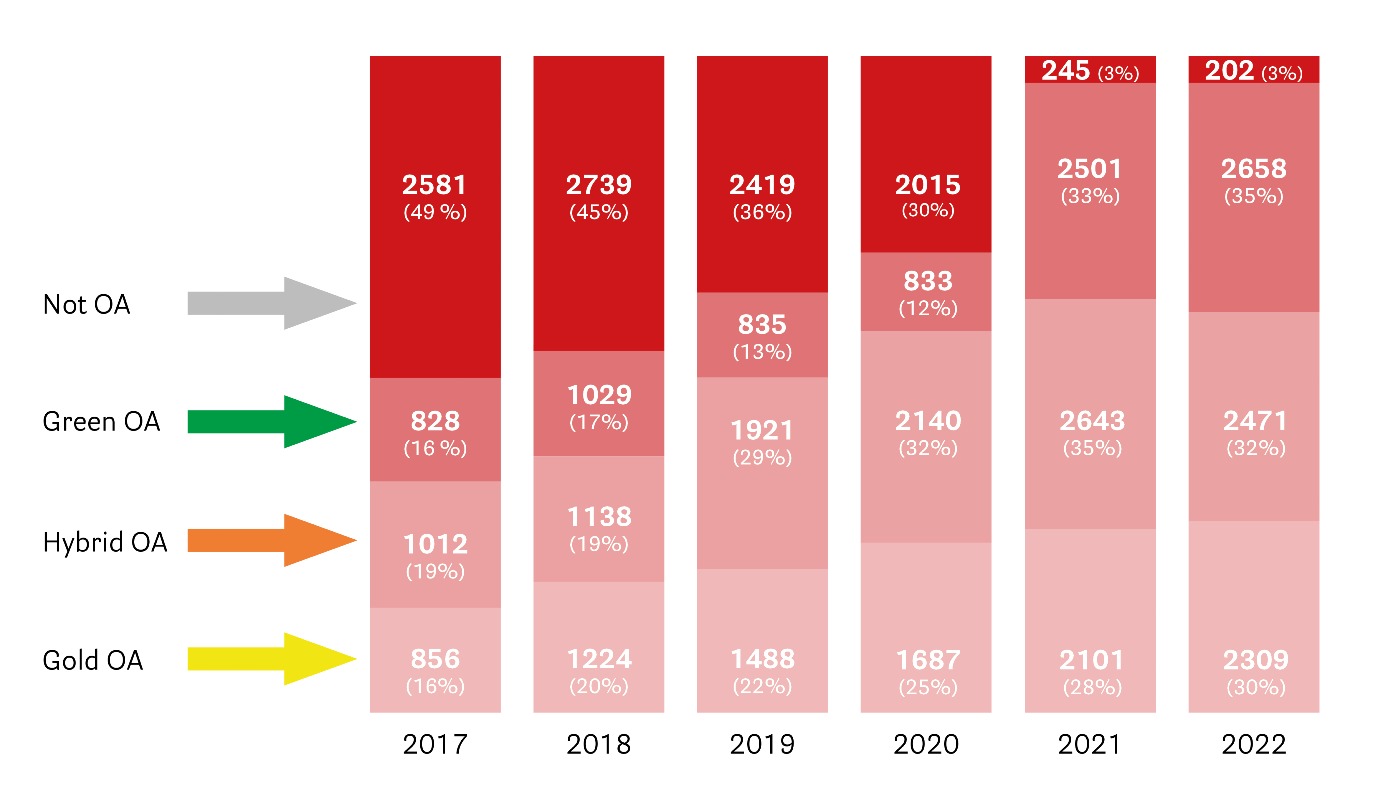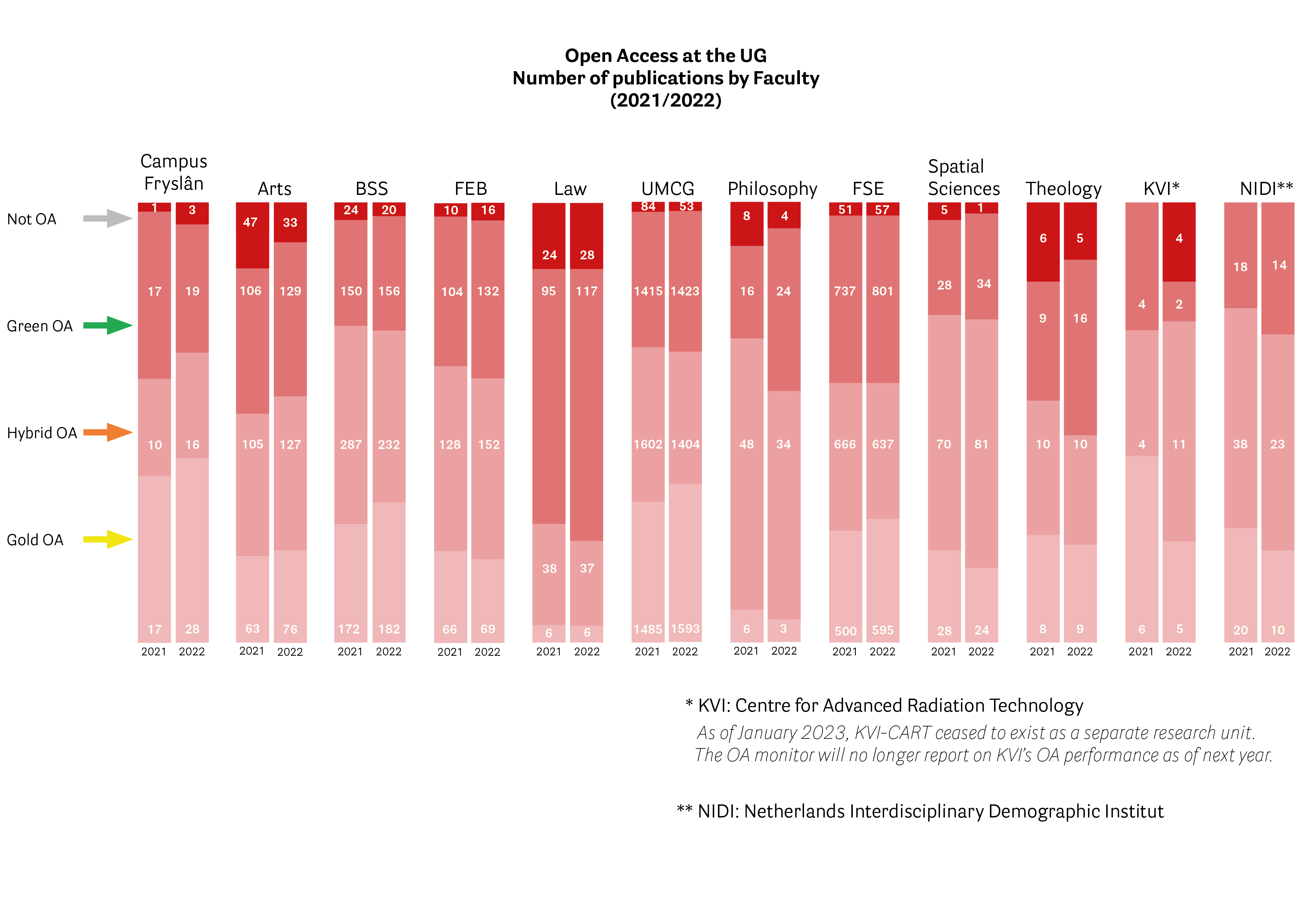Almost 100% open access at the UG/UMCG
In 2022, 97% of UG/UMCG peer-reviewed articles and conference proceedings were open access - including gold (30%), hybrid (32%) and green (35%) open access. The share of open access publications remained stable from 2021, but rose significantly compared to previous years (69% in 2020, 64% in 2019, 55% in 2018, 51% in 2017 and 37% in 2016).
The steep rise registered in the last two years is largely due to the implementation of the new open access procedural regulations which resulted in a significant growth of the green open access share.
Open Access statistics 2017-2022
(click for a larger image)


Open access procedural regulations (Taverne amendment)
As of May 2021, publications by UG/UMCG authors are automatically made available through the institutional repository (Pure) six months after their first publication in a journal or edited book. This is possible thanks to Article 25fa of the Dutch Copyright Act (also known as Taverne amendment), which grants Dutch-affiliated researchers the right to make their short academic works open to the public for free after a short embargo period.
The University of Groningen Library (UB) and the Central Medical Library (CMB) are responsible for implementing the regulations.
Open access via UNL deals
Articles and conference proceedings published under the Dutch consortium open access deals represented 20% of the UG/UMCG’s total output (1,565 out of 7,640 articles and conference proceedings).
| Last modified: | 10 January 2024 10.43 a.m. |
More news
-
21 May 2024
Results of 2024 University elections
The votes have been counted and the results of the University elections are in!
-
13 May 2024
Trapping molecules
In his laboratory, physicist Steven Hoekstra is building an experimental set-up made of two parts: one that produces barium fluoride molecules, and a second part that traps the molecules and brings them to an almost complete standstill so they can...
